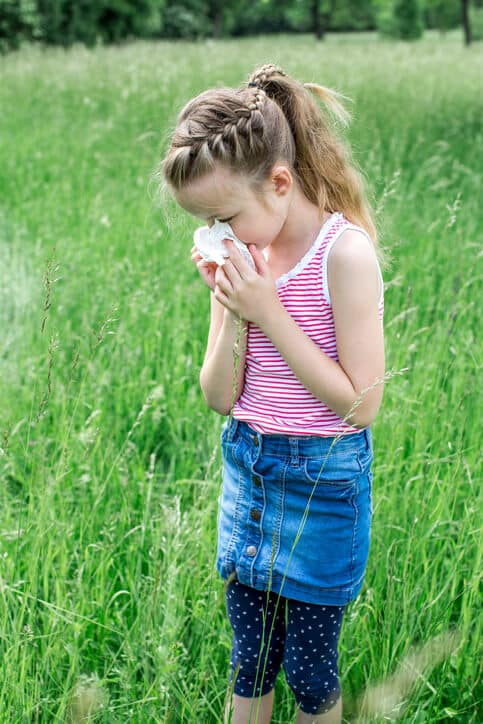Spring is in the air, which means that allergies are too! While you’re out enjoying the warmer weather and beautiful blooms, you may be looking for ways to soothe your spring allergies. At Allergy and Clinical Immunology, we’ve put together a guide to help you spring into action and tackle common spring allergies!
What Causes Spring Allergies?
During spring, the most common cause of seasonal allergies is pollen. Pollens are tiny grains produced by plants for reproduction. Some plants rely on bees to spread pollen, while others utilize the wind. Pollens spread by the wind are the main cause of allergy symptoms for those with pollen allergies.
 Tree Pollen
Tree Pollen
In early spring, trees will begin to release their pollen. Some of the worse trees for pollen in Pittsburgh include:
- Pine
- Oak
- Birch
- Fir
- Ash
- Beech
- Walnut
- Maple
- Hickory
- Cedar
- Elm
- Juniper
Tree pollen is dry and lightweight, making it easy for the wind to carry it great distances, so these trees don’t have to be in your yard or neighborhood to cause allergic reactions.
Grass Pollen
Later in the spring season, grass will begin to release its pollen which can also cause symptoms in those with pollen allergies. Common grasses that cause allergic reactions include, but are not limited to:
- Kentucky
- Bermuda
- Rye
- Timothy
- Orchard
Keep in mind that the weather can affect how much pollen plants release. On warmer days, plant growth and fertilization are increased. Rainy days help to slow down the spread of pollen, whereas windy days will help pollen spread easily, which will increase your allergy symptoms.
How Can I Soothe My Allergy Symptoms?
One way to help soothe your symptoms is to reduce your exposure to pollen. This can be done in several ways, including:
- Checking local pollen counts and reduce your time outside when the pollen levels are high.
- Keep the grass on your lawn short, and wear a dust mask when gardening and mowing.
- If possible, keep your windows closed and install allergy-friendly filters on your air conditioning unit.
- Bathe and change and wash your clothes after being outside.
- Take off your shoes before entering the home.
- Wear a hat and sunglasses while outside to help reduce the pollen that gets into the hair and eyes.
You can also treat your symptoms with medications such as:
Nasal corticosteroids– This is a type of nasal spray that is used to reduce inflammation which can help treat allergic rhinitis.
Antihistamines– This medication is used to relieve a number of allergy symptoms such as runny nose, itchy eyes, and sneezing.
Eye drops– With eye drops, you can soothe red, itchy, and swollen eyes.
Decongestants– This medication will shrink the lining of your nasal passages, which helps to reduce stuffiness.
Immunotherapy for Spring Allergies
If you are looking for a long-term solution for your allergy symptoms, you may consider immunotherapy. This is an effective vaccination program that can help increase your immunity to allergens that trigger your symptoms.
This process works by gradually increasing the amounts of allergens you are given over the course of several months. The injections are first given weekly or bi-weekly and then monthly.
As your body is exposed to small amounts of a specific allergen through injections, your body is able to build up an immunity to the allergens that plague you. This immunity will help reduce the allergic symptoms you experience when you come into contact with the allergen.
If you have moderate to severe allergies throughout most of the year, don’t respond well to the medications, and can’t easily avoid what triggers your allergies, then immunotherapy may be a great option to soothe your spring allergies.
To learn more about immunotherapy and how it can help you beat your spring allergies, contact the experts at Allergy and Clinical Immunology today!